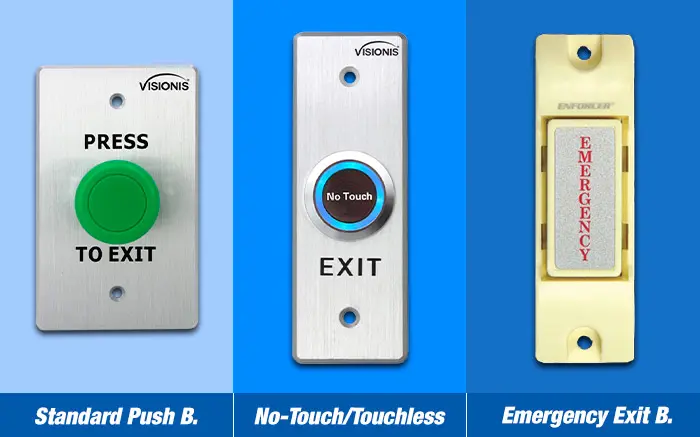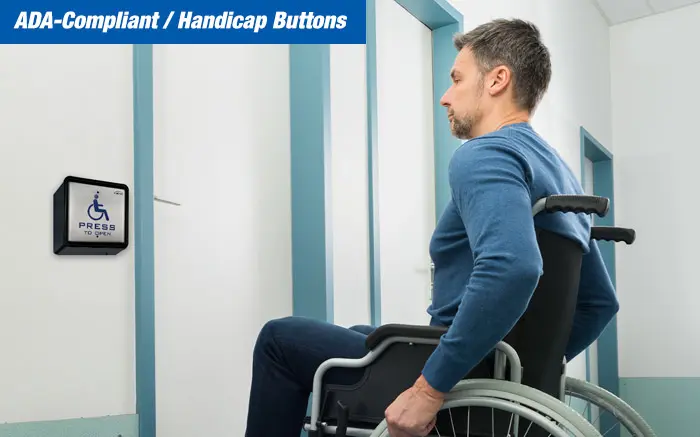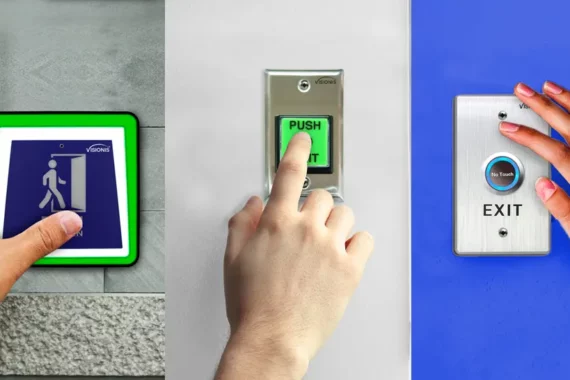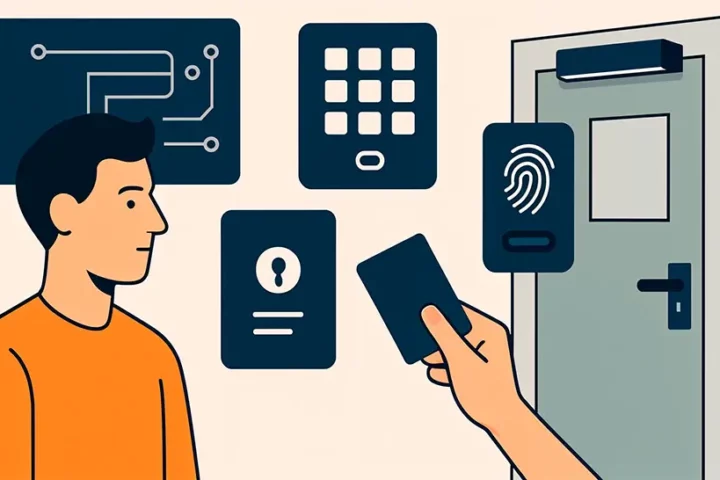A push to exit button is a device used in access control systems to allow authorized exit from a secured area. When pressed, it signals the system to unlock the door, often disengaging an electric strike or magnetic lock. These buttons are crucial for safety, convenience, and code compliance, especially in commercial and institutional buildings.

Unlike a handicap door button or ADA push button that opens doors for accessibility, a push to exit button is specifically designed to release a locked door. You'll find them in offices, retail stores, schools, warehouses, and other facilities where controlled access is essential.
What Is the Push to Exit Button For?
Push to exit buttons serve several key functions:
Allow free egress in areas secured by access control systems
Ensure ADA compliance by providing accessible exit options
Meet fire and building codes that require manual exit options
Provide quick and easy exit during power outages or emergencies
These buttons are often paired with motion sensors or time-delay features for additional safety and flexibility.
Types of Push to Exit Buttons: Choosing the Right Solution
Choosing the right push to exit button depends on your specific needs. Here are the main types:

- Simple mechanical buttons that require physical pressure
- Often illuminated for visibility in dark areas
- Available in various sizes and mounting options
- Activate with minimal contact
- No moving parts, making them more durable
- Often feature LED indicators
- Work with proximity sensors
- Activated by waving or holding hand near the sensor
- Increasingly popular for hygiene reasons, especially post-COVID
- Larger, often red buttons
- Sometimes covered with protective cases to prevent accidental activation
- May include alarm features
By Installation Method

- Installed on the wall surface
- Easier to install but more visible
- Recessed into the wall
- More aesthetically pleasing but requires more installation work
- Slim design for door frames or areas with limited space
By Application

ADA-Compliant/Handicap Buttons
- Specifically designed for secure areas
- Often integrated with access control systems
- May include delay features
- Designed for outdoor use
- Sealed against moisture and dust
- Often made of stainless steel or other corrosion-resistant materials
- Use air pressure rather than electrical circuits
- Useful in hazardous environments where electrical sparks could be dangerous
- Reinforced construction
- Often made of metal rather than plastic
- Designed to withstand tampering or damage
What is an Access Control System?
As security is a bigger concern for homes, businesses, and institutions, access control systems are now important. No matter where you are, understanding access control is important for safety. This applies to front offices, warehouses, and multi-tenant buildings. Knowing the basics is the first step to creating safer spaces. In this guide, we’ll walk you...Continue reading→


